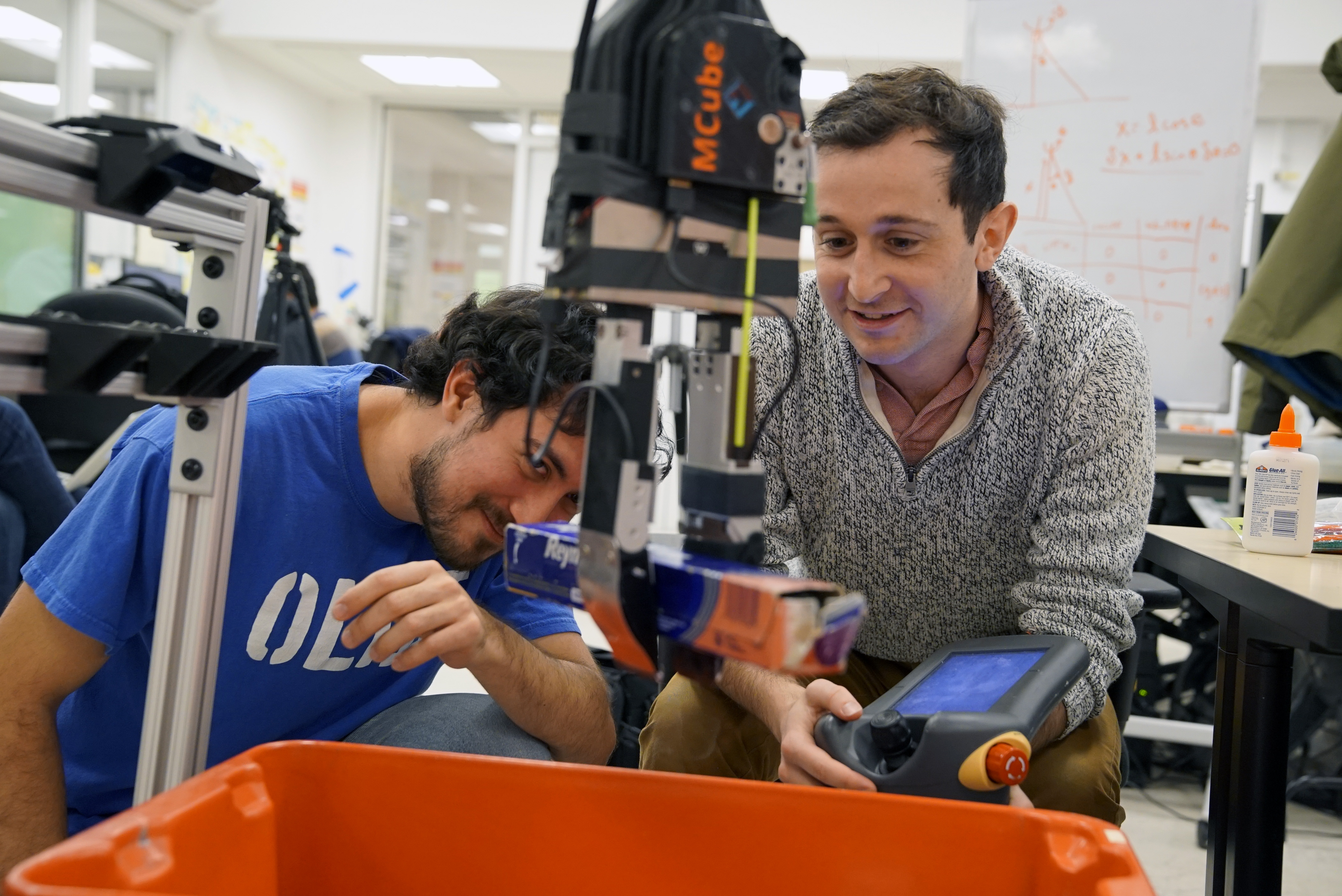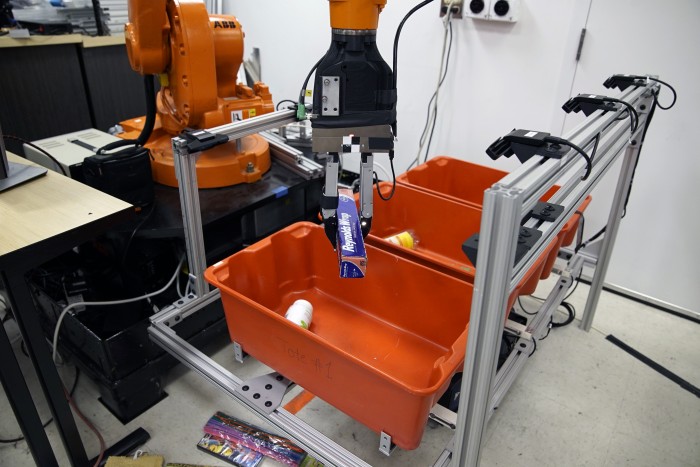
Engineers from MIT and Princeton University have developed a robotic system that may one day lend a hand in unpacking groceries and other picking and sorting tasks, from organizing products in a warehouse to clearing debris from a disaster zone.
The team’s design is based on two general operations: picking (the act of successfully grasping an object) and perceiving (the ability to recognize and classify an object, once grasped).
The researchers engineered a standard industrial robotic arm outfitted with a custom gripper and suction cup. They then trained the robotic arm to pick novel objects from a cluttered bin, using any one of four main grasping behaviors: suctioning onto an object, either vertically or from the side; gripping the object vertically like a claw; or, for objects that lie flush against a wall, gripping vertically and then using a flexible spatula to slide between the object and the wall.
The team showed the robot images of bins cluttered with objects, captured from the robot’s vantage point. They then showed the robot which objects were graspable—with which of the four main grasping behaviors—and which were not, marking each example as a success or failure. They did this for hundreds of examples, and over time, the researchers built up a library of picking successes and failures. They incorporated this library into a deep neural network—a multilayered algorithm that enables the robot to match the current problem it faces with a successful outcome from the past.

The researchers also developed a perception system, enabling the robot to classify an object once it’s been successfully grasped. They assembled a library of product images, taken from online sources such as retailer websites, and labeled each image with the correct identification—for instance, duct tape versus masking tape. Then they developed another learning algorithm to relate the pixels in a given image to the correct label for a given object.
At the Amazon Robotics Challenge in Japan last July, the team’s two-ton robot faced off against 15 other bots in a competition to pick and stow objects from a cluttered bin. The robot stowed all 20 objects in the allotted time, earning first place in the stowing category.
“This [system] can be applied to warehouse sorting but also may be used to pick things from your kitchen cabinet or clear debris after an accident. There are many situations where picking technologies could have an impact,” says mechanical engineering professor Alberto Rodriguez. He and his colleagues at MIT and Prince-ton will present a paper detailing their system at the IEEE International Conference on Robotics and Automation in May.
Keep Reading
Most Popular
Large language models can do jaw-dropping things. But nobody knows exactly why.
And that's a problem. Figuring it out is one of the biggest scientific puzzles of our time and a crucial step towards controlling more powerful future models.
The problem with plug-in hybrids? Their drivers.
Plug-in hybrids are often sold as a transition to EVs, but new data from Europe shows we’re still underestimating the emissions they produce.
Google DeepMind’s new generative model makes Super Mario–like games from scratch
Genie learns how to control games by watching hours and hours of video. It could help train next-gen robots too.
How scientists traced a mysterious covid case back to six toilets
When wastewater surveillance turns into a hunt for a single infected individual, the ethics get tricky.
Stay connected
Get the latest updates from
MIT Technology Review
Discover special offers, top stories, upcoming events, and more.